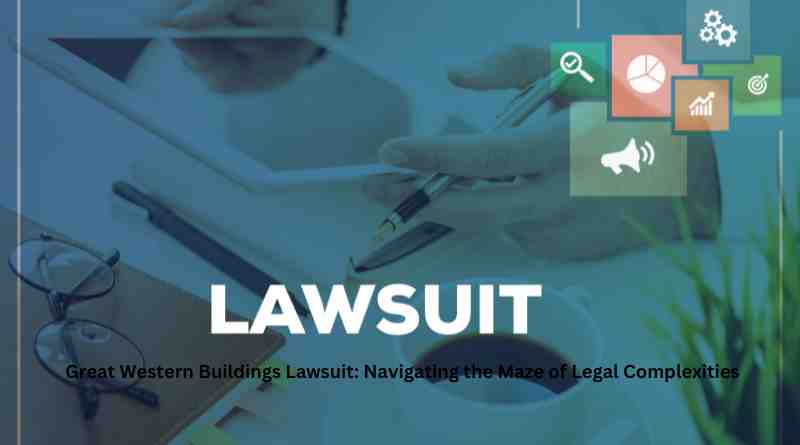Introduction
The Great Western Buildings lawsuit represents a pivotal moment in legal history, intertwining complex legal principles with the robust construction industry. This legal battle is not just a dispute over contractual obligations or regulatory compliance; it’s a narrative that explores the intricate relationship between law, business ethics, and architectural integrity. As we unravel the layers of the Great Western Buildings lawsuit, we delve into a labyrinth of legal precedents, regulatory scrutiny, and the formidable task of interpreting contractual language against the backdrop of construction norms.
Historical Context and Precedent
The Genesis of the Dispute: The lawsuit’s roots trace back to a series of contracts and agreements, the expectations set forth by the Great Western Buildings company, and the subsequent alleged breaches. Understanding the historical context of these agreements and the standards of practice in the construction industry is crucial. The legal arguments presented rest heavily on past precedents, where similar disputes have set the stage for current interpretations of construction and contract law.
Shifting Legal Landscapes: Over the years, building regulations and legal expectations have evolved, significantly impacting cases like the Great Western Buildings lawsuit. A detailed examination of how historical shifts in law affect current legal battles provides insights into the complexities involved in navigating such disputes. This section would explore significant cases and legal reforms that have shaped the understanding and outcomes of construction-related litigations.
The Legal Battle Unfolds
Claims and Counterclaims: The heart of the lawsuit lies in the claims and counterclaims filed by the parties involved. This involves a detailed look into what the Great Western Buildings alleged and how the defendants responded. The claims usually revolve around breach of contract, negligence, and sometimes, fraudulent practices. Each claim and counterclaim brings forth a subset of legal theories and precedents that both complicate and clarify the legal standing of the parties involved.
Evidence and Interpretation: In legal battles, especially in the context of complex construction lawsuits, the evidence presented and its interpretation by the court can significantly sway the direction and outcome of the case. This section would delve into the types of evidence presented, including contractual documents, expert testimonies, and regulatory documentation. How the court interprets these pieces of evidence, in light of the law and precedent, forms a crucial part of understanding the lawsuit’s trajectory.
Legal Nuances and Technicalities
Contractual Intricacies: At the heart of many construction lawsuits, including the Great Western Buildings case, are the contractual agreements between parties. This part of the article would dissect the contractual language, obligations, and expectations set forth in the agreements that underpin the lawsuit. It will also explore how ambiguities in contract language can lead to differing interpretations and, consequently, legal disputes.
Regulatory Compliance and Standards: Construction laws and building standards play a significant role in shaping the arguments and outcomes of lawsuits. This section will focus on how regulatory compliance or the lack thereof has influenced the Great Western Buildings lawsuit. Understanding the standards that were expected and the allegations of failing to meet these standards provides a comprehensive view of the legal challenges faced by parties.
Broader Implications
Impact on the Construction Industry: Legal battles like the Great Western Buildings lawsuit have far-reaching consequences beyond the parties involved. This segment will explore how the lawsuit’s outcome could influence legal standards, business practices, and ethical considerations within the construction industry. It also considers how future contractual agreements might be shaped by the findings and rulings of this case.
Lessons Learned: Every lawsuit offers a myriad of lessons for businesses, legal professionals, and regulators. This section will distill the key takeaways from the Great Western Buildings lawsuit, emphasizing what companies can learn about contract drafting, risk management, and legal strategies. It’s a reflection on how, despite the complexities and challenges, legal disputes can lead to a better understanding and improvement of industry practices.
Conclusion
The Great Western Buildings lawsuit is more than a legal skirmish; it’s a comprehensive narrative that showcases the multifaceted nature of legal disputes in the construction industry. Navigating through its complexities requires an understanding of legal principles, contractual nuances, and the broader socio-economic context. As the lawsuit continues to unfold, it will undoubtedly contribute to the evolving landscape of construction law and business ethics. This case serves as a testament to the ever-changing nature of legal battles and the constant interplay between law, business, and industry standards.
Read also: check

